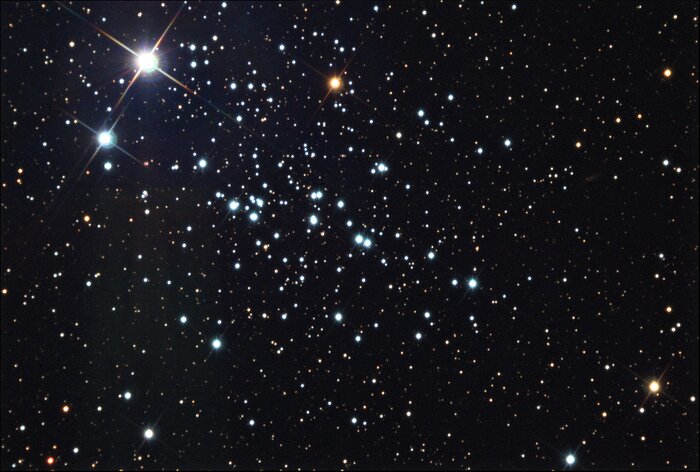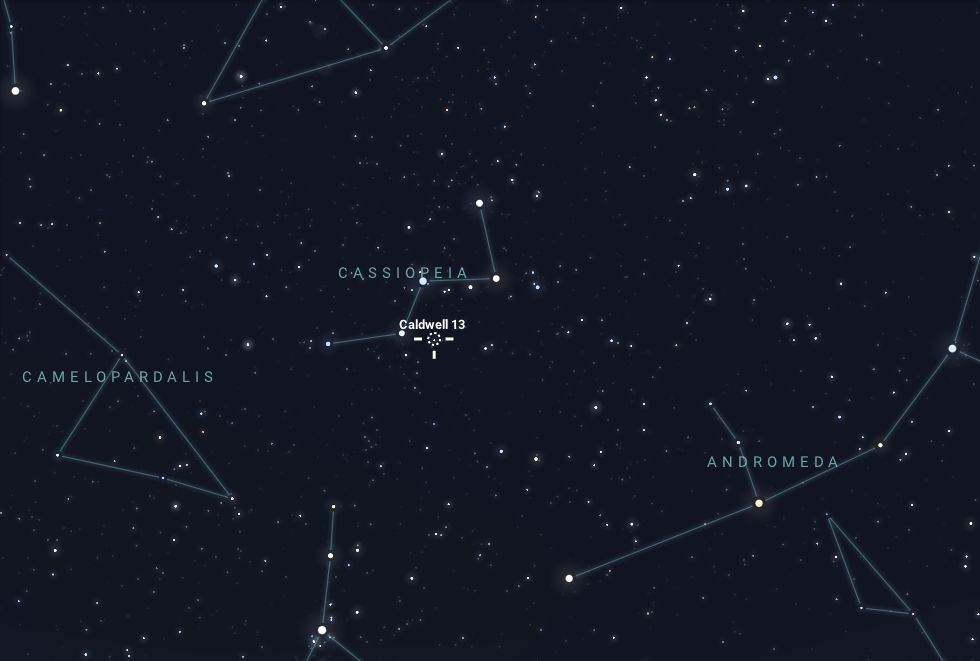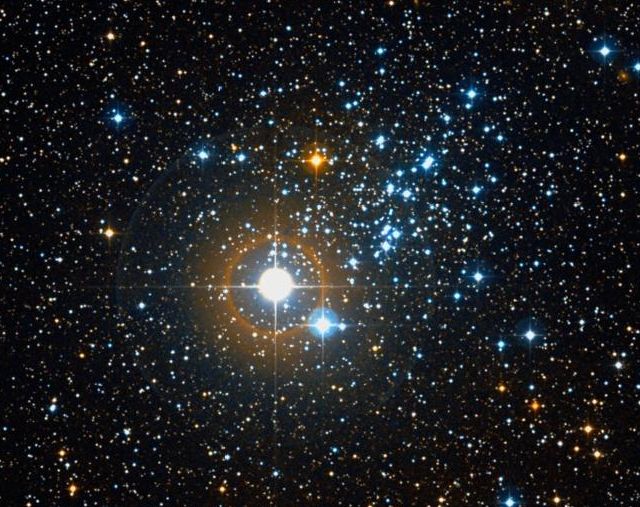NGC 457 (Caldwell 13), commonly known as the Owl Cluster or ET Cluster, is a prominent and bright open star cluster located in the constellation Cassiopeia. Discovered by the German-British astronomer William Herschel in 1787, it was catalogued in his New General Catalogue (NGC) under the designation NGC 457.
Physical Characteristics
NGC 457 is estimated to be around 21 million years old, making it a relatively young stellar cluster. It consists of numerous young, hot, blue stars, with a few red giant stars interspersed throughout. The cluster’s distinctive configuration resembles the face of an owl, giving rise to its nickname, the “Owl Cluster.” This is particularly evident in the cluster’s shape, where two prominent stars, Phi Cassiopeiae and HD 7902, serve as the owl’s “eyes,” while a fainter grouping of stars forms the rest of the owl’s head.
The Owl Cluster exhibits a loose and irregular structure, with stars scattered over a relatively wide area of the sky. This scattering contributes to its hazy appearance when viewed with the naked eye.

Observation
With an apparent magnitude of approximately 6.4, NGC 457 is easily observable with binoculars or a small telescope from a dark location. Its brightness and considerable apparent size make it a popular target among amateur astronomers. The cluster is best observed from the Northern Hemisphere, where Cassiopeia is prominently visible during the fall and winter months. It lies just outside the reach of the unaided eye. However, when viewed through binoculars or telescopes, individual stars within the cluster become distinguishable, revealing its true beauty.
The optimal time for observing NGC 457 is from late summer to autumn (specifically August, September, and October) in the Northern Hemisphere. During these months, the constellation Cassiopeia is high in the night sky, providing ideal viewing conditions. Cassiopeia is a circumpolar constellation, meaning it does not set below the horizon in northern latitudes, although its position changes throughout the year. In winter, NGC 457 is generally not visible in the evenings because it is located closer to the horizon and may set earlier in the night. Observers may still glimpse it during pre-dawn hours as the seasons transition.




